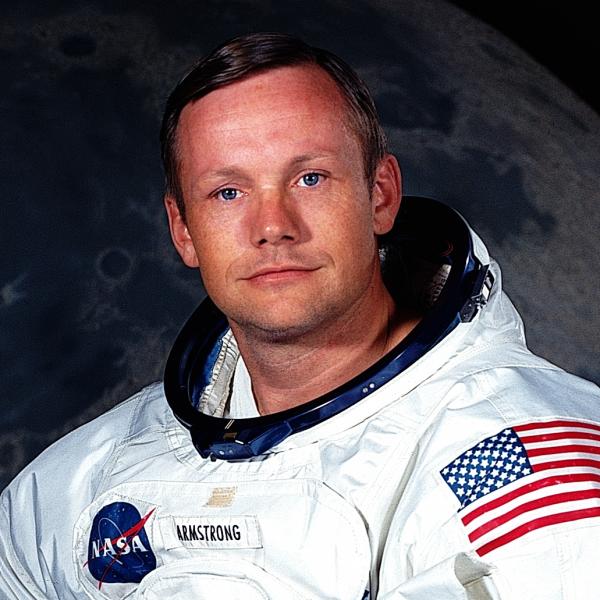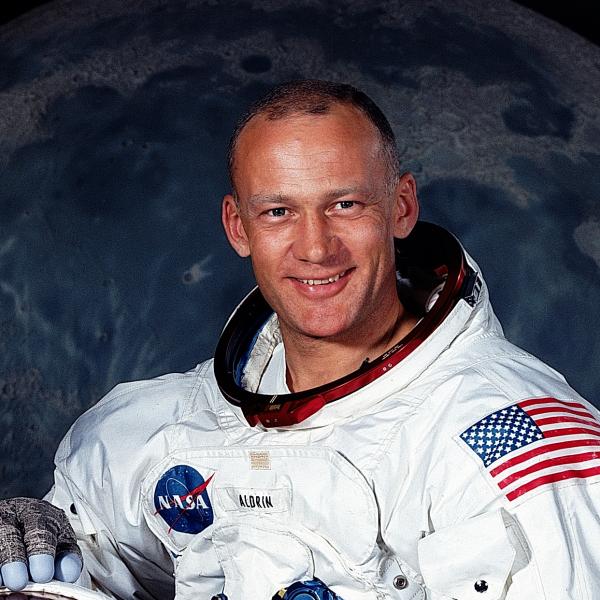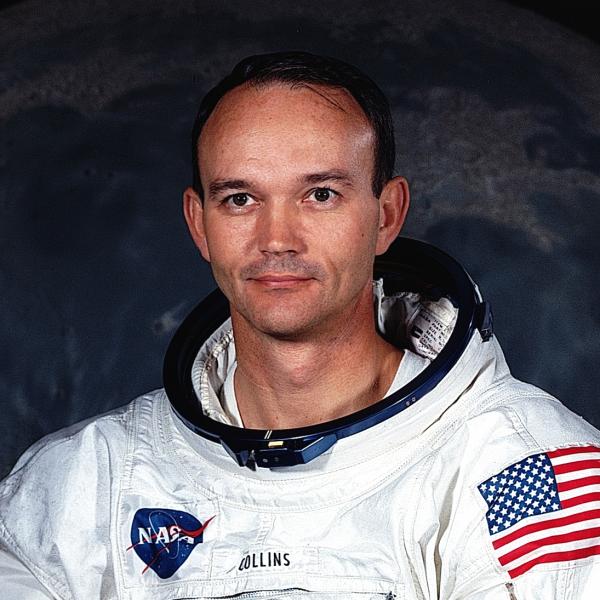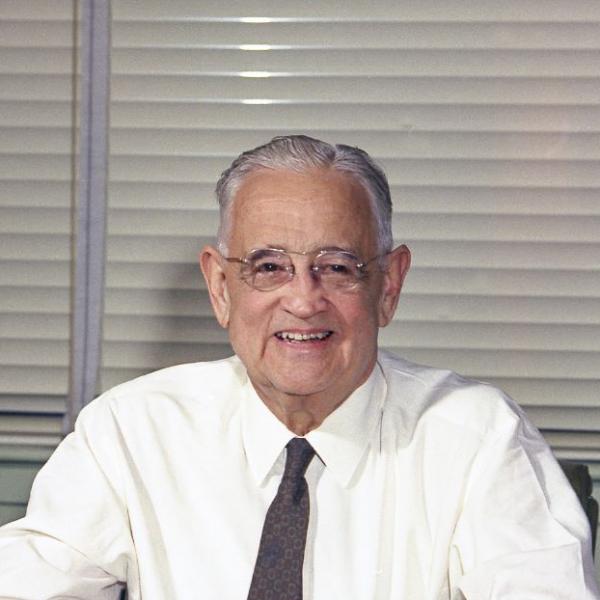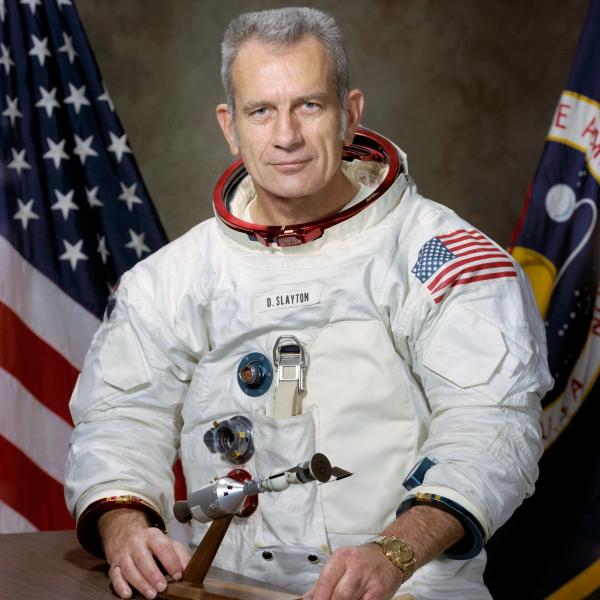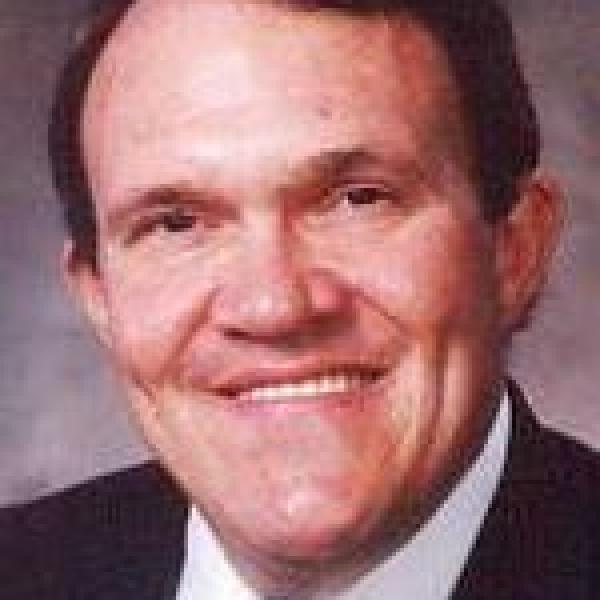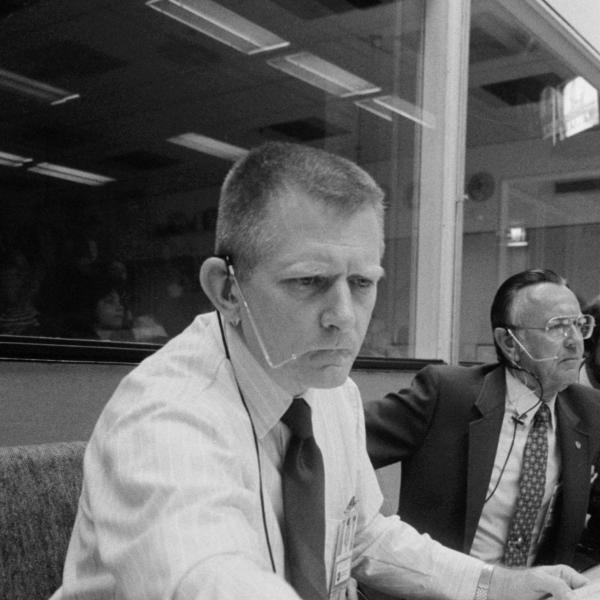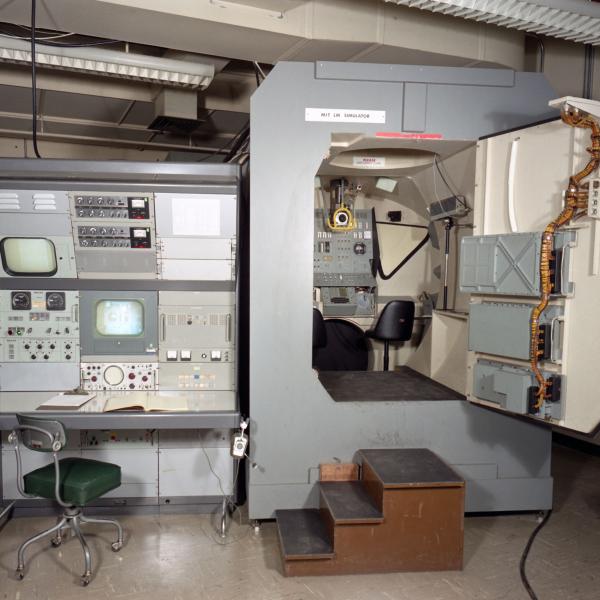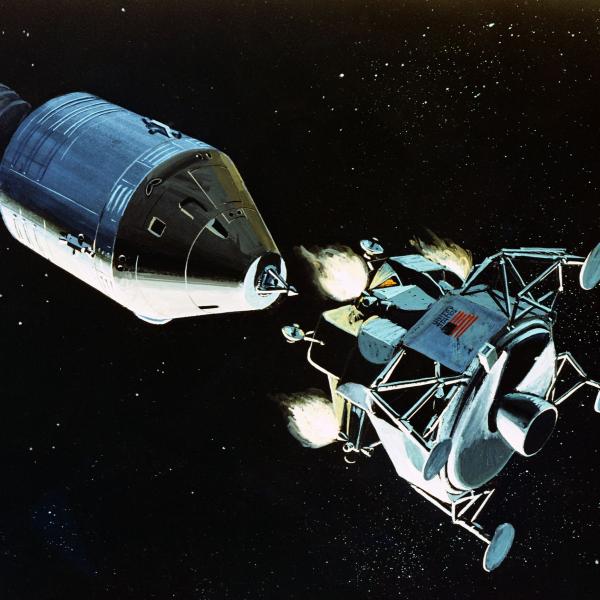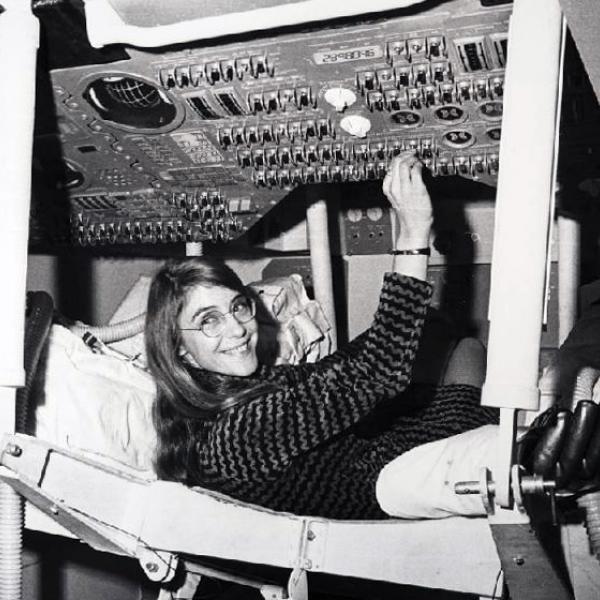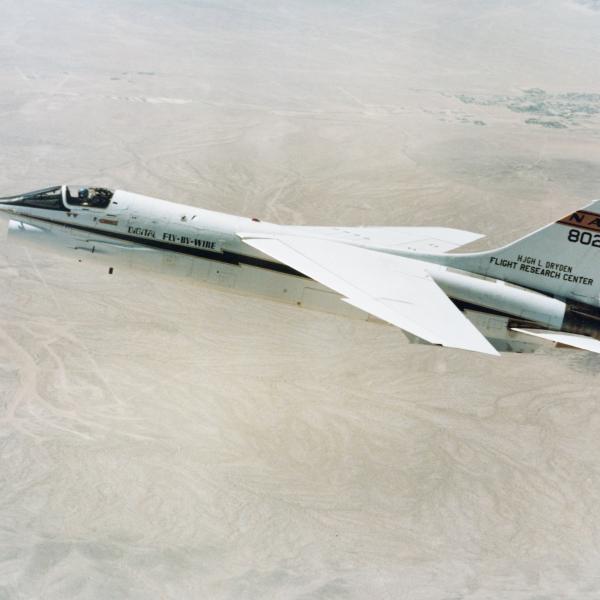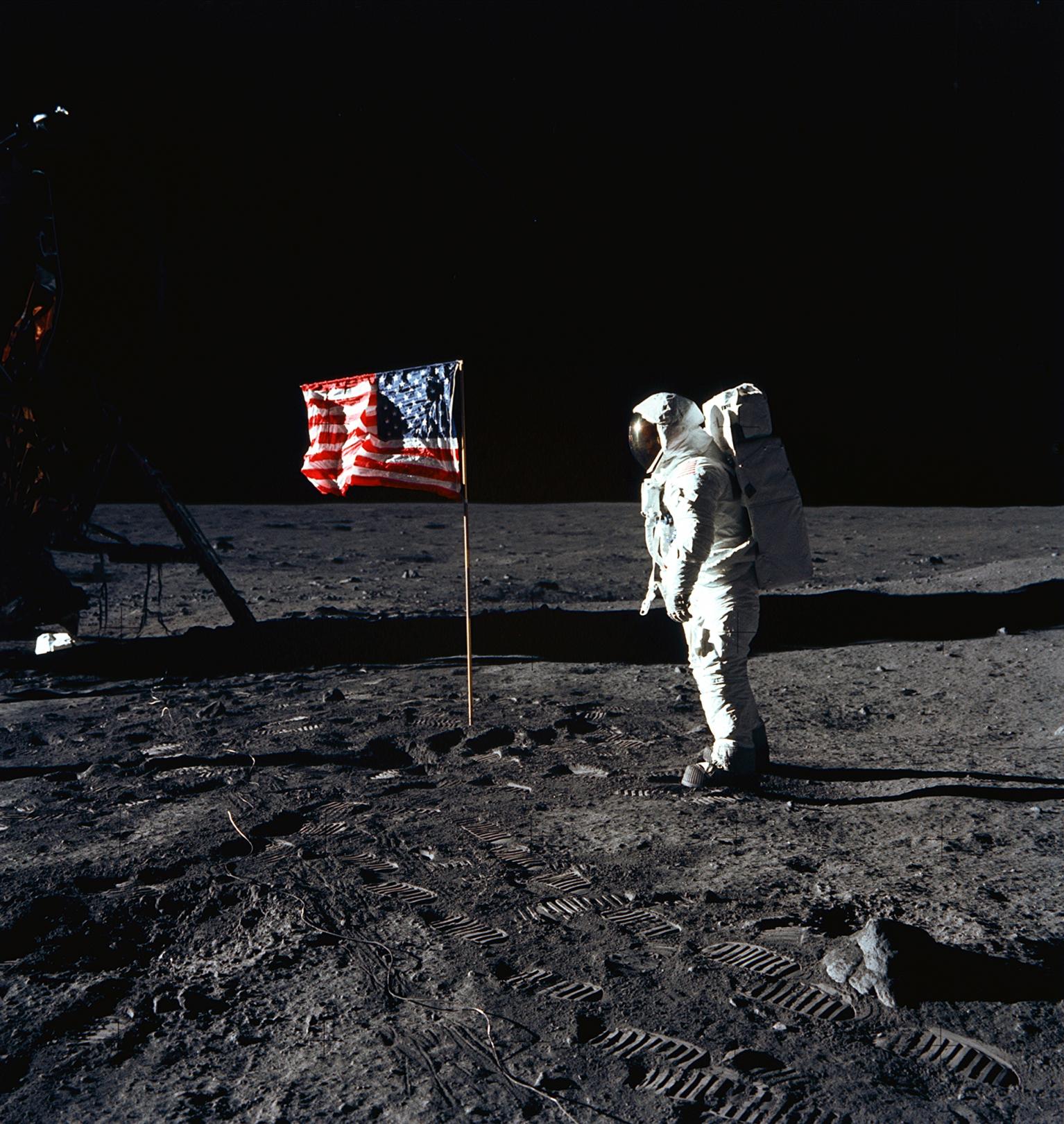
The Apollo 11 Moon Landing
"One small step for man, one giant leap for mankind." But it almost didn't happen. Apollo 11 was the mission that enabled humans to land on the moon in 1969.
The previous mission had descended to within 10 miles of the lunar surface. Apollo 11 would attempt to go the rest of the way, but no one knew what surprises might lurk in those last few vertical miles.
Astronauts Neil Armstrong and Buzz Aldrin would pilot the Lunar Module (LM). Michael Collins would remain in the Command and Service Module (CM) in lunar orbit, as the lifeline for Armstrong and Aldrin to return home.
The MIT Instrumentation Lab was responsible for the design and programming of the hardware and software of the primary guidance system for both the LM and the CM -- the brain and central nervous system of the spacecraft. Some members of the Lab were at the Manned Spacecraft Center in Houston while others listened in over a squawk box in a conference room at the Lab called the SCAMA room. MIT engineers had followed the mission since liftoff, but now, as the LM approached the designated landing spot, the SCAMA room was getting crowded. Meanwhile, a quarter of a million miles away a manned spacecraft emerged from behind the moon in lunar orbit about 50,000 feet above the cratered surface, where the moon landing burn would begin.
While Neil Armstrong pilots the LM, Buzz Aldrin, keys commands into the guidance computer via the DSKY (Display Keyboard), Verb 37 Enter 63 Enter.
He is calling up the most complex software ever to operate any vehicle, much less a spacecraft. The guidance equation must shape a fuel-efficient trajectory that affords visibility of the surface to the crew, enables them to bend the trajectory toward a new site, and operates the descent engine within its constraints.
The spacecraft maneuvers to the correct attitude and the countdown begins. At zero — the moment NASA calls "powered descent initiation" — the engine bursts into flame. The LM is flying feet first, thrusting directly against its orbital velocity. Two indicators on the DSKY panel are lit, but as the LM passes through an altitude of 38,000 feet the lamp labeled ALT goes out, then the one labeled VEL — signals that the landing radar has locked onto the surface and is measuring altitude and velocity. It is unsafe to land without radar data. Aldrin keys in Verb 16 Noun 68 Enter, to select a display of radar data on the DSKY — and it is here that the landing goes off the rails.
"Program alarm."
It is Armstrong's voice. Quickly Aldrin keys the DSKY to see the alarm code.
"It's a 1202," says Armstrong, and Aldrin echoes, "1202."
The 1202 priority alarm is interrupting the astronaut's normal mission displays to warn them that something is wrong. The slots where the operating system stores data about jobs in progress are all used up. No one has anticipated this. There is concern in the SCAMA room because they know that when that alarm occurs, a computer restart is commanded, and that is scary. The computations in progress are reconstructed from scratch. The restart capability was originally developed to cope with brief power outages. It was the inspired decision of MIT computer scientist Charley Muntz to call upon it if certain unusual problems occurred in the software.
In a back room in Houston, Jack Garman consults his handwritten "cheat sheet" that listed potential emergency error codes. He has seen this error code before during training and simulations and realizes that the LM can keep flying.
Fifteen seconds have gone by. "Give us a reading on the 1202 program alarm," says Armstrong, sounding tense.
"Roger, We got ya — we're GO on that alarm," replies astronaut Charlie Duke, who is serving as Capcom, the only man in mission control who speaks directly to the crew.
As the landing proceeds, four more alarms of the same or similar type occur. Each time mission control says GO. With the alarms sounding and a menacing boulder field below, Armstrong maneuvers for two long minutes in the final landing program before settling into the lunar dust of the Sea of Tranquility.
"Houston, Tranquility Base here. The Eagle has landed."
"Roger, Tranquility. We copy you on the ground. You got a bunch of guys about to turn blue."
The 1202 alarm issue which nearly led to an abort of the landing was traced to an obscure electrical condition in which the computer is flooded with pulses that could steal as much as 13% of the processing time. During the complex landing phase that exceeded the available margin. The problem might occur only one time in a hundred, and only if the mode switch for the rendezvous radar (although irrelevant during the landing) was in a certain position — but that is what the Apollo 11 checklist called for. Fortunately, the flight software's priority display system reminded the astronauts to put the radar switch back to where it belonged.
Soon after the mission, Apollo Program Manager George Low complained to chief astronaut Deke Slayton, that "675 checklist changes were processed in the 30 days prior to launch." In that total there were bound to be some stinkers.
While Armstrong and Aldrin were heroes for taking their spacecraft to the Moon, the MIT Instrumentation Lab software and hardware teams were there with them, their system playing the role of an additional crewman. When the crisis came, all the innovation they poured into that system paid off spectacularly as the guidance system was able to adapt to the error condition, and the mission was saved.
